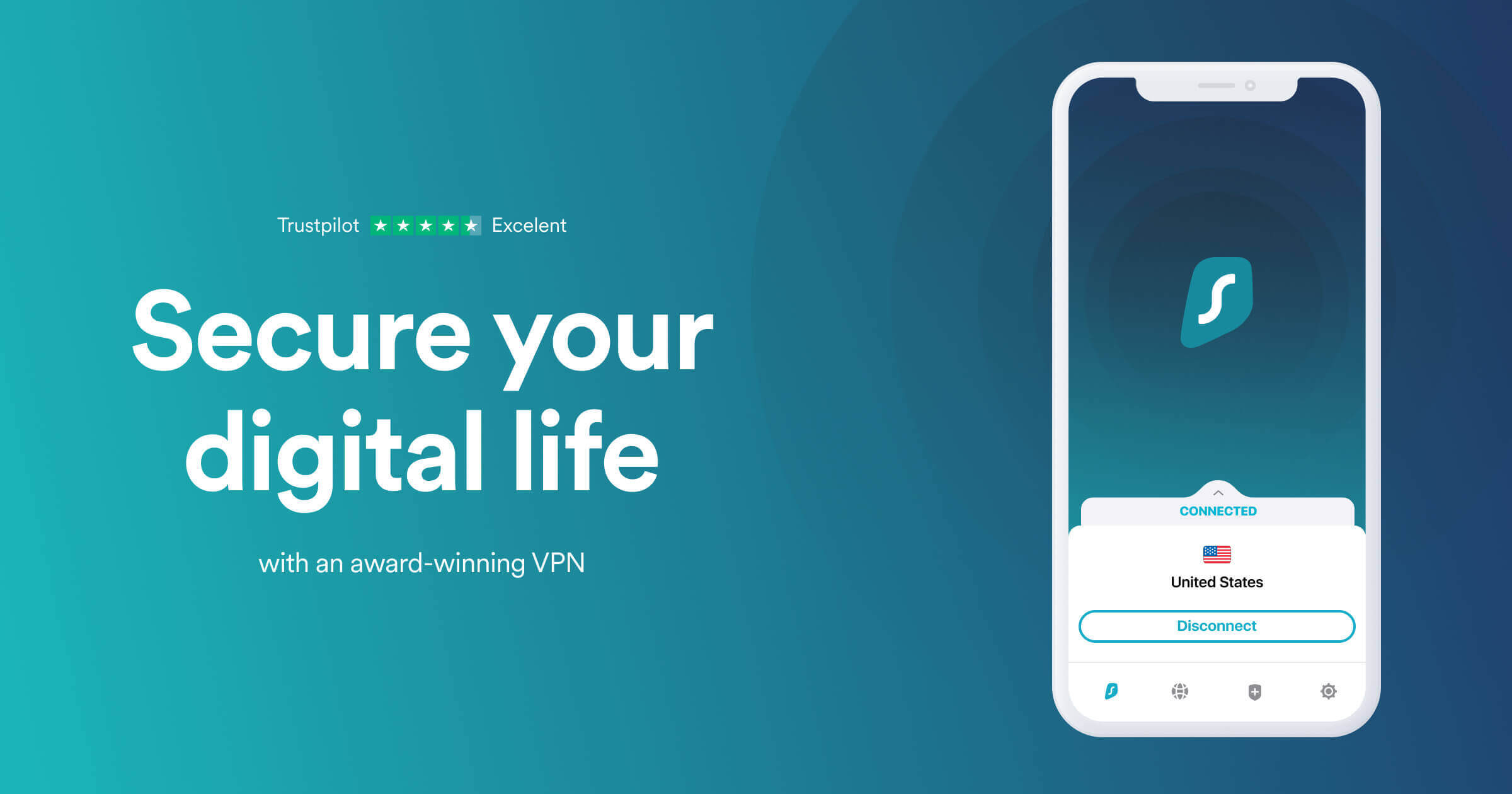I love how useful the internet is in my day-to-day life, but I am at a loss sometimes when it comes to protecting myself from malicious actors out there. So, when it comes to a Man In The Middle attack (MITM), can a VPN protect me?
The answer is yes! A VPN can help protect you against an MITM attack by encrypting your data as it travels across the internet and hiding your true IP address and identity.

NordVPN Special Deal
Get VPN protection from NordVPN, one of the most reliable VPN companies in the world, for just $3.99/month!
✅ Possibly, the best Double VPN implementation.
✅ Over 5000 servers in 60 countries.
✅ VPN split tunneling support.
What is a Man in the Middle attack?
If you’re here, though, and you have no idea of what a Man In The Middle attack is, don’t worry!
I won’t get into too much detail, but basically, it’s when someone intercepts the communication between two parties without them knowing. It’s often used to gain access to confidential information or login credentials.
What types of MITM attacks are there?
Knowledge is power and all that, so it’s important to be aware of the different types of MITM attacks out there. Common ones include ARP poisoning, DNS spoofing and SSL hijacking.
Let’s take them one by one.
ARP Poisoning
ARP Poisoning or Spoofing is when an attacker intercepts communication by using a forged address. This means that data sent from one party is directed to the attacker rather than its intended destination.
For example, an attacker could send a forged ARP request across a network, which would cause all data intended for an intended recipient to be sent to the attacker instead.
I think it’s obvious based on how this attack works how useful a VPN is in helping protect you from it. You can be sure that your data is encrypted and secure, and that the attacker won’t be able to intercept it.

DNS spoofing
DNS spoofing works similarly – by intercepting communication between two parties by using a fake address. In this case, though, the attack focuses on DNS requests rather than ARP requests.
For example, let’s say Google uses a certain IP for one of their servers. When you type in Google’s address into your browser, your computer sends a DNS request to the Google server. If an attacker manages to intercept this request, they can send you to a malicious website instead of the legitimate one.
Again, a VPN is useful since your DNS service is now provided by the VPN company and the secure tunnel prevents any malicious actors from intercepting your requests.

The Best VPN Deal You Can Find Anywhere!
Get a VPN that lets you use an unlimited number of devices, offers amazing security features and has an unbeatable offer!
82% off + 2 Months Free
- Unlimited Devices
- Ad & malware blocker
- Cookie pop-up blocker
- Two-Factor Authentication
- 24/7 support
- $2.49/Month!
SSL hijacking
Finally, SSL hijacking is an attack in which the attacker attempts to intercept the secure connection between two parties. This type of attack can be devastating since it allows the attacker to access confidential data like login credentials and credit card information, which they then have free rein to do whatever they please with.
Using a VPN is one of the best ways to protect yourself against SSL hijacking, as it encrypts your data and ensures that any requests sent through the VPN are secure. So, even if someone manages to intercept your request, they won’t be able to read it since it is encrypted.

ExpressVPN Special Offer: 3 Free Months for our readers!
Get the best-rated VPN service in the world with a special offer just for the readers of PrivacyTutor!
Evil Twin Attack
The last type of attack I want to focus on is the Evil Twin attack. This is where an attacker sets up a fake Wi-Fi access point that looks legitimate and then captures data sent and received by users who connect to it.
Remember how we’ve mentioned above about avoiding free Wi-Fi at all costs? This is precisely why. It’s also why you should be sure to only connect to networks you trust, as an attacker could use an Evil Twin attack to steal your confidential information.
This type of attack can be difficult to protect against, so using a VPN is key here as well. By connecting to the internet with a VPN, you are
It can be a bit overwhelming trying to understand all the different ways malicious actors can target you online. So, if you have any questions about protecting yourself from an MITM attack, feel free to leave a comment, and we’ll do our best to help you out.
What is the purpose of a Man in the Middle attack?
I know what you may be thinking. Why on earth would someone want to do this?
Well, malicious actors can use MITM attacks to gain access to sensitive information such as usernames and passwords or credit card numbers.
They can also manipulate the traffic they intercept and inject malware into your computer.
If you’ve ever heard about phishing attacks, MITM attacks are a lot like that. They’re usually done by someone who is trying to gain control over your data or steal information.
I don’t want to alarm you or anything, but this is VERY serious, and you need to be aware of the risks.

Identity and Data Theft
One of the worst-case scenario of a MITM attack is identity and data theft. If an attacker gains access to your personal information, they can use that to gain access to other accounts or even steal money from you.
In addition, if the attacker has control over your computer, they can install malicious programs that allow them to keep track of everything you do online and even use your computer to spread malware themselves.
Corporate Phishing
Some of the most complex attacks are carried out against corporations.
In these attacks, the hacker will use a MITM attack to intercept communications between different departments in the company and then send malicious emails that appear to come from trusted sources within the company.
These emails can contain links or attachments that are infected with malware, allowing attackers to gain access to sensitive data such as financial records or customer information.
So, it’s important to understand the potential risks associated with a MITM attack so that you can protect yourself and your data from this type of malicious activity.
The best way to do this is by investing in a good VPN service, as this will encrypt your communications and make it much more difficult for an attacker to intercept your data.

NordVPN Special Deal
Get VPN protection from NordVPN, one of the most reliable VPN companies in the world, for just $3.99/month!
Is there a way to tell if a Man-in-the-Middle attack is happening?
The short answer is yes, but it can be hard to tell if your connection has been compromised. It’s better to be proactive rather than reactive when it comes to these types of attacks, so a good security measure is to use a VPN.
However, here are some possible signs that you may be experiencing a MITM attack:
- Abnormally slow browsing speeds
- Unexpected redirects to unfamiliar websites
- Unusual popups or browser windows
- Changes to your computer’s settings without your permission
If you experience any of these symptoms, someone might be attempting an MITM attack on your network.
Recommended VPNs



Will any VPN protect me from MITM attack?
Well, here’s the thing. I think we keep repeating in most of our articles about being very selective with the VPN that you choose. Not all of them are created equal, and some might not be as secure or reliable as others.
For instance, we feel strongly against free VPNs for the simple reason that they don’t provide the same level of protection and privacy that you’d get from a paid one.
Free VPNs might be ok for streaming services, but if security is your main concern, it’s better to go with a provider that has proven itself as reputable and secure.
It’s also important to choose a VPN that offers features such as automatic kill switch and DNS leak protection, so you can be sure that your data is safe from MITM attacks.
At the end of the day, investing in a good VPN could be one of the best decisions you make for your online security and privacy.
Other best practices to avoid MITM attacks
I think you’ve figured out by now that we truly love using VPNs at PrivacyTutor. But they’re not the only security measure you should take when it comes to online safety.
Here are a few other best practices that can help protect against MITM attacks:
Use a dedicated DNS service
We’ve seen how a malicious DNS server can be used to redirect your web traffic, so it’s important to make sure that you’re using a reliable DNS service.
By using a dedicated DNS provider, you’ll have an extra layer of protection against MITM attacks and other malicious activity.
I, personally, use NextDNS on all my family devices & networks. It not only provides a fast and secure DNS service, but it also offers additional protections such as malware and phishing protection.

NextDNS
NextDNS protects you from all kinds of security threats, blocks ads and trackers on websites and in apps and provides a safe and supervised Internet for kids — on all devices and on all networks.
Use two-factor authentication for all your accounts
It goes without saying, but adding an extra layer of security to your accounts is always a good idea. Two-factor authentication adds another step to the login process, which makes it harder for attackers to gain access.
HTTS Everywhere
Another way to stay safe online is to make sure you’re always using HTTPS whenever possible. This will help encrypt your data, so it’s harder for attackers to intercept.
Be careful with public Wi-Fi
Public Wi-Fi networks are notoriously dangerous and should be avoided if possible. If you do have to use one, make sure to stick to HTTPS sites and use a VPN for added protection.
Upgrade your router to WPA2 alongside AES encryption
Since a MITM attack is basically someone trying to infiltrate your network, you should make sure to secure it as much as possible. Upgrading your router to the latest WPA2 protocol alongside AES encryption is a good step in that direction.
Conclusion
So, there you have it. MITM attacks are one of the most common forms of cyberattack and can be quite dangerous if not dealt with properly.
The best way to protect yourself from MITM attacks is to use a reliable VPN, but there are other measures you can take such as using two-factor authentication, HTTPS Everywhere, upgrading your router to WPA2, and avoiding public Wi-Fi networks whenever possible.
By following these steps, you can ensure that your data and privacy are protected from any malicious actors on the web.
I hope this blog was useful to you and gave you a better understanding of how to protect yourself from MITM attacks. If you have any questions or thoughts, feel free to leave them in the comments section below. Thanks for reading!
Cheers,
The PrivacyTutor Team 🙂








